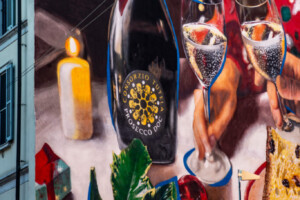Vineyard Italy has to deal with climate and temperatures every year, but recently there has been one aspect that has distanced itself in volume: exports. In 2015 exports reached 5.39 billion euros, for 2 million hectoliters shipped around the world, including bottled, sparkling and bulk. Simply put, now the success of Italian wine is based more on foreign markets than domestic, and the ratio between export volume to domestic consumption has gone from 1 to 2 in 2001 - 17 million hectoliters exported and 30 million hectoliters for domestic consumption, to 1 to 1 in 2011, the turning point, when exports and domestic consumption were tied, at just under 23 million hectoliters (including grape must). What is happening today? The trend is positive, as the share of 5.3 billion euros in value is a new record, but the data WineNews analyzed for Vinitaly, the international wine exhibition for the industry (Verona, April 10 to 13), revealed it is becoming increasingly harder to expand the share of Italian wines on different markets, as on the mature ones, like Germany and Great Britain it is difficult to increase growth, while on emerging markets, starting with China, there is still a big gap to fill with countries such as France, Australia and even Spain.
Average prices, then become essential and can better narrate the state of Italian wine on every single market. The average price in 2015, according to the latest data from various sources WineNews analyzed (UIV, Observatory Italian wine, Vinitaly) was 3.30 euros per liter for bottled wine, 3.55 euros per liter for sparklings and just 0.73 euro cents for bulk wines.
In comparison with France, for instance, which leads the standings with 8.24 billion euros of wine exported in 2015, the average price is 5.83 euros per liter, including bulk.
Bottled still wines, which represent the largest share and are the most representative of the Italian wine trade, show huge differences from country to country. One of the most important destinations in terms of volume is Switzerland, where last year have 53.3 million bottles were exported and reached the highest average price: 6.12 euros per liter. The largest volumes and consequently values are the “usual” three markets, US, Germany and Britain, and each one had a different story to tell in 2015. Exports to the US grew 12.5% in value and 4.7% in volume compared to 2014, while the UK fell on both counts, 2.2% less and 2 %.
Germany instead was stable , with a slight increase of 1.4% in volume and 1.6% in value. And , what about the average price paid to Italian producers? The United States is firmly at the top, at 4.13 euros per liter, compared to 2.73 in Germany and 2.11 in Britain.
Sparkling wines have come to the rescue, at least in Great Britain. Bubbles alone are worth almost 270 million euros (in addition to 423 million euros of still bottled wines), 50.9% more than in 2014, for an average price of 3.11 euros per bottle. Sparkling wines are also soaring in the US where the 194 million euros (in addition to 1 billion euros for bottled still wines), up 28.2% compared to 2014, at 3.80 euros per liter. Germany, however, perhaps Italy’s most stable and fundamental partner, in a dynamic sector like bubbles, was stationary, reaching only 86 million euros (plus 754 million for bottled still wines), only 3% more than in 2014, for an average price of 3.78 euros per liter.
After the "Big Three", curiosity and the most attention are for China, where the wine trade is finally seeing the light again, following two difficult years, including spending reviews and a slowdown in economic growth. But Italy is not benefitting as it closed 2015 with a very disappointing 82 million dollars of bottled still wines sent to Beijing, only 1.4% more than in 2014, for a 23.6% growth in volume, which means a 17.9% decrease in the average price to 3.63 dollars per liter.
And the bubbles sector is not any better, as it closed at 17 million dollars, down 24.5% with average price at 2.95 dollars per liter.
Copyright © 2000/2025
Contatti: info@winenews.it
Seguici anche su Twitter: @WineNewsIt
Seguici anche su Facebook: @winenewsit
Questo articolo è tratto dall'archivio di WineNews - Tutti i diritti riservati - Copyright © 2000/2025








































































































































































































